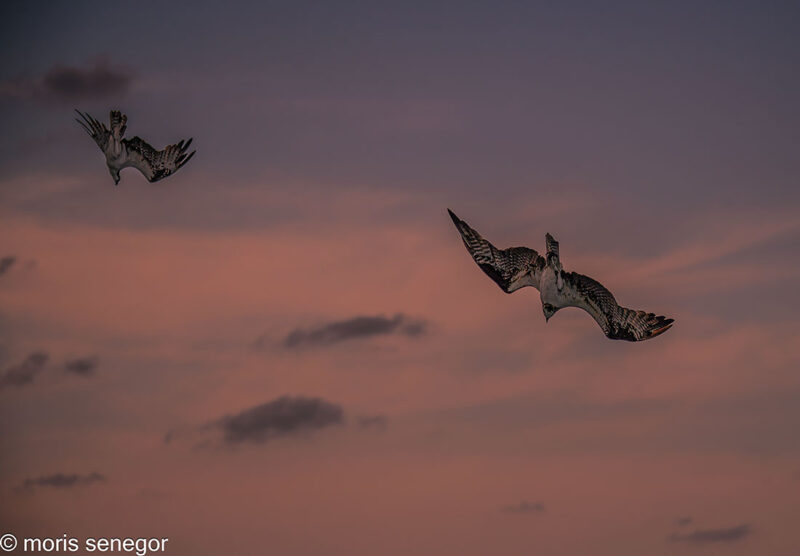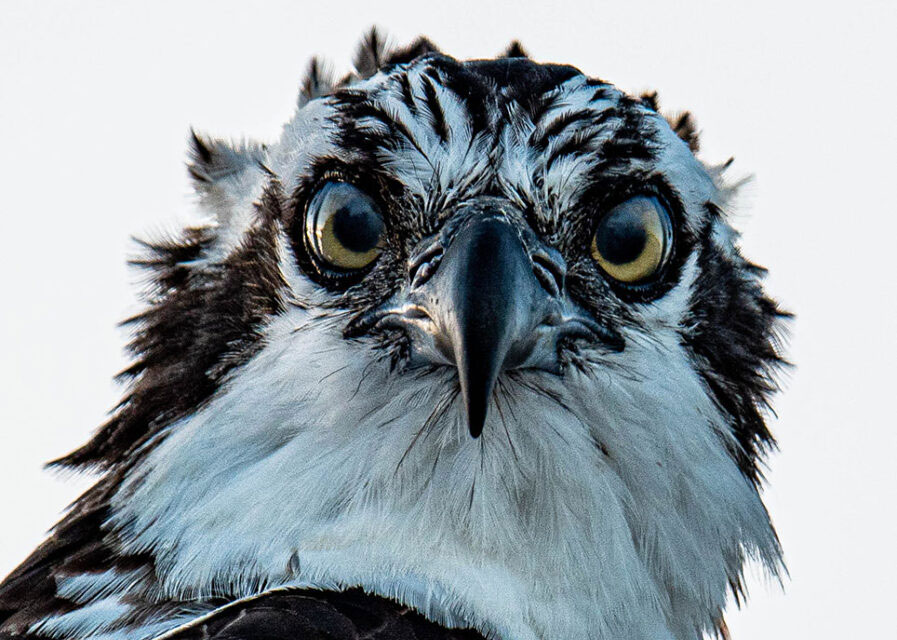
Photographing Ospreys
My first encounter with an osprey was as intimate as it was mysterious. It happened in 2020 at a San Diego waterside where I intended to shoot a moon rise. I noticed a large bird ten feet away, atop a pole, eyes on the water. The moon had not risen yet. So, I turned my long lens onto the bird.

I had no idea what it was. The bird remained fixated on the water except for a split second when it looked at me. I captured the moment.
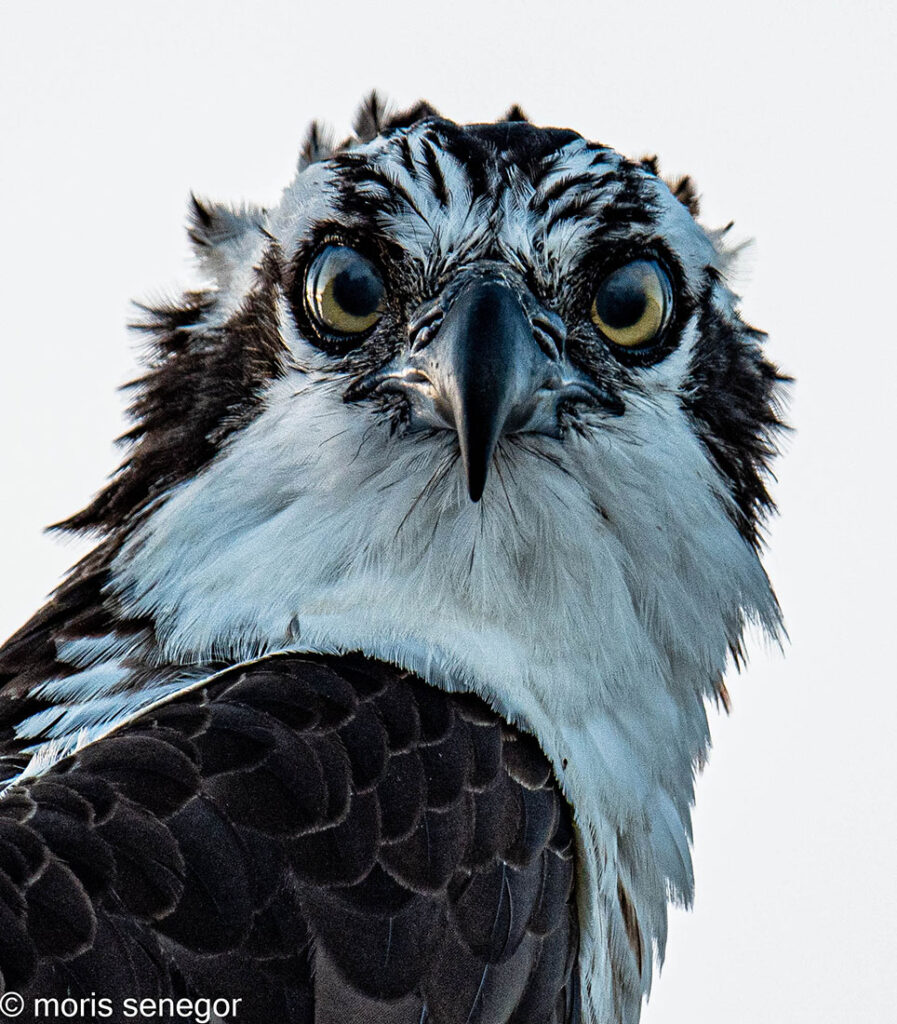
The moonrise was a dud. All I got was the bird. I processed the photos and texted one to a knowledgeable friend, asking what it was. He replied, “Looks like an osprey.”
So began my infatuation with ospreys.
Researching the species, I discovered that ospreys are raptors that exclusively eat fish. They have keen eyesight, capable of identifying underwater prey, and sharp talons with which they secure the slippery fish.
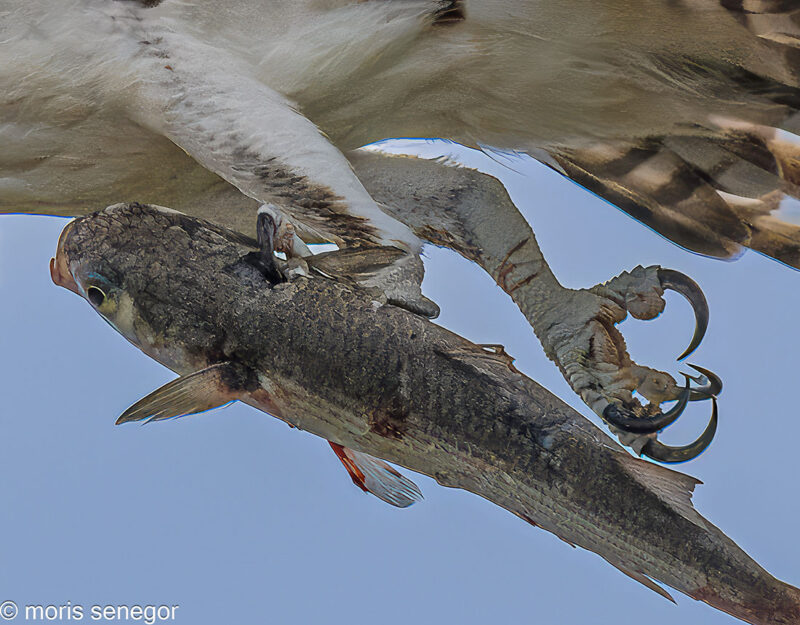
My next osprey encounter was a year later, again in San Diego, this time in Coronado Island. While shooting shore birds I spotted a strange creature flying at a distance. It seemed to have peculiarly long legs. When I processed the photos, I realized that what looked like legs was a large branch the bird was carrying, for a nest I presumed.
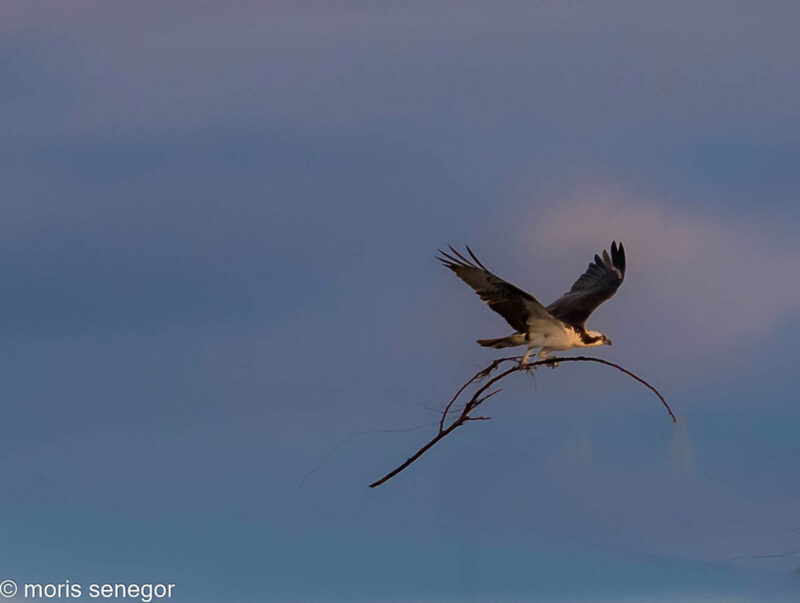
One of the frames I shot, of the bird flying by a high rise, captured the awkward juxtaposition of wildlife and human civilization.

At this point it seemed that I would only encounter ospreys in San Diego. Boy, was I wrong.
Ospreys can be found near any body of water as long as they have fish. Here in Stockton, we have several nearby reservoirs, Camanche and Pardee in particular, where a couple of tips led me to discover osprey nests on their shores.
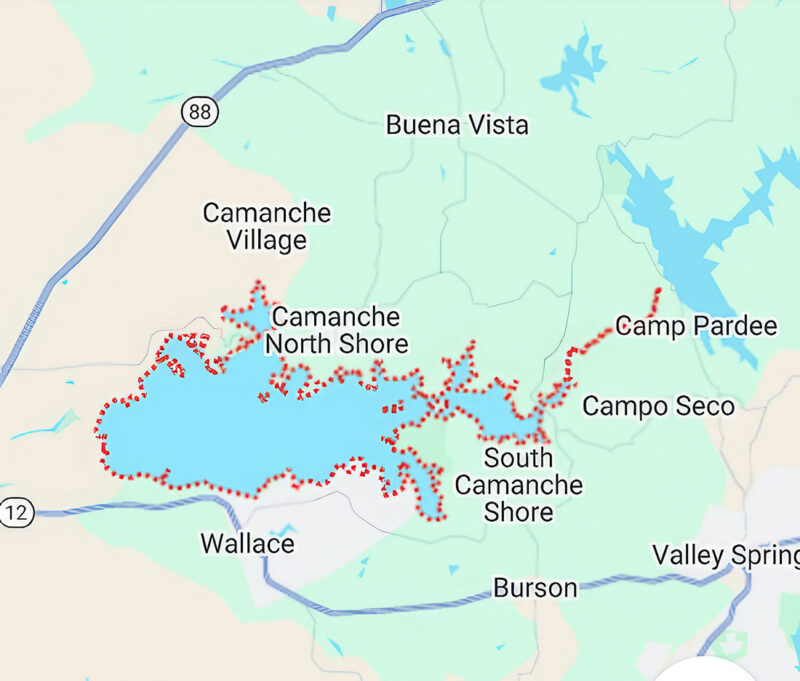
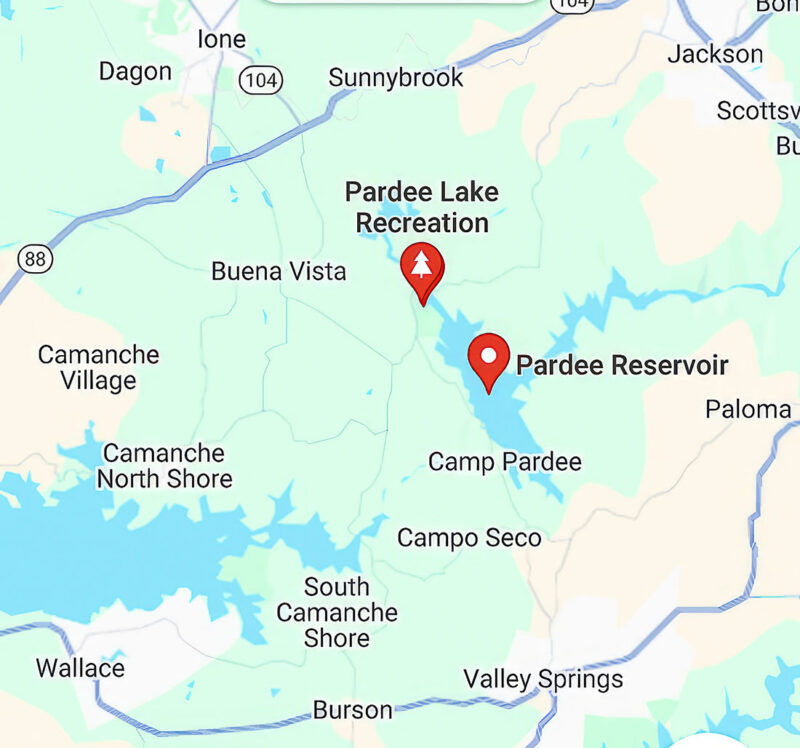
The first tip came from a good friend who works for PG&E. There was a large nest, he said, along Highway 12 in Wallace, a small town near the south shore of Camanche. The nest was atop a PG&E pole. That’s how he knew.

When I drove out to investigate, I discovered not one but three nests in the area, the one in Wallace the largest. Later I would discover yet another along the north shore. These were active nests that in late summer, had fledglings in them.
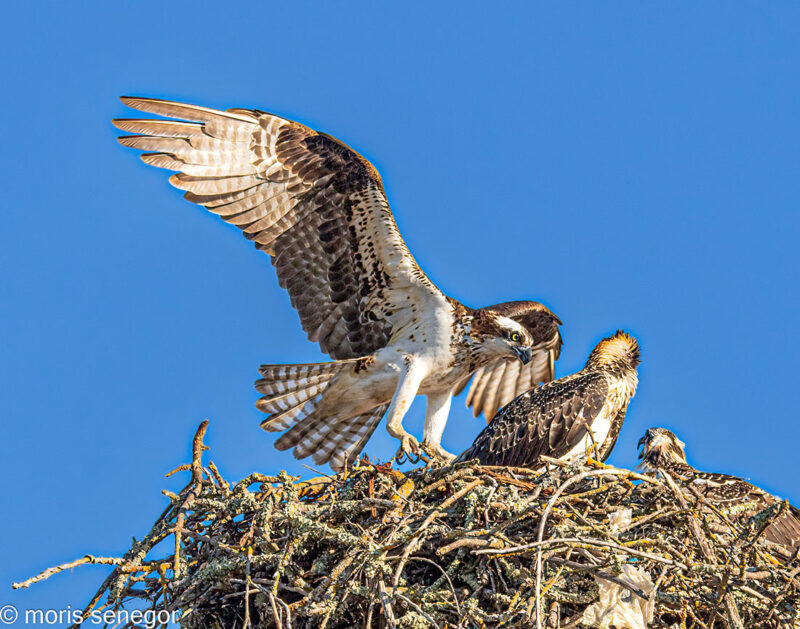
The parents were busy bringing them food. I soon had countless shots of ospreys flying in and out of nests and better yet, with fish in their talons.
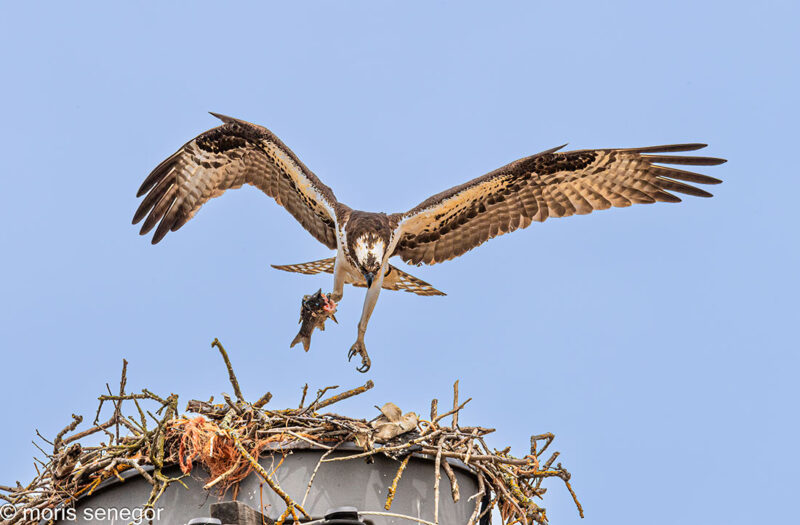
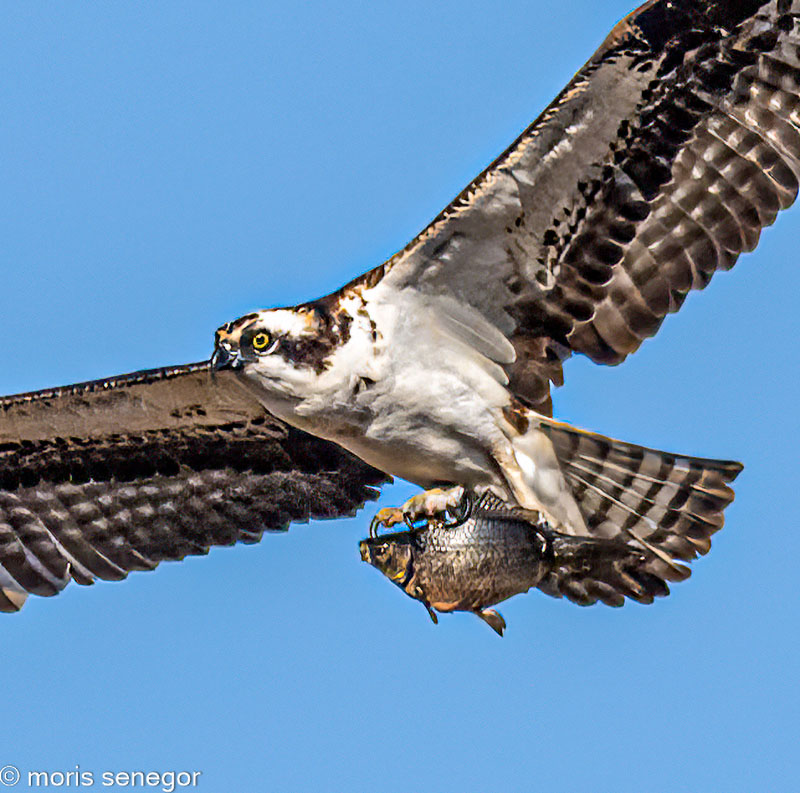
A second tip came from someone at my hospital. He told me that there were bald eagles near Lake Pardee. He gave me a map with the precise location of the nest at the northern tip of the lake. I promptly scouted the area and discovered it was ospreys, not eagles. I found two nests in the area.

Ospreys resemble eagles and are commonly mistaken for them. In fact, in some languages, ospreys are called “fish eagles.”
I now had six nests, all about an hour’s drive from my home. I could not believe my good luck.
On frequent trips to Camanche and Pardee I observed the ospreys and learned how to distinguish males, females and juveniles.
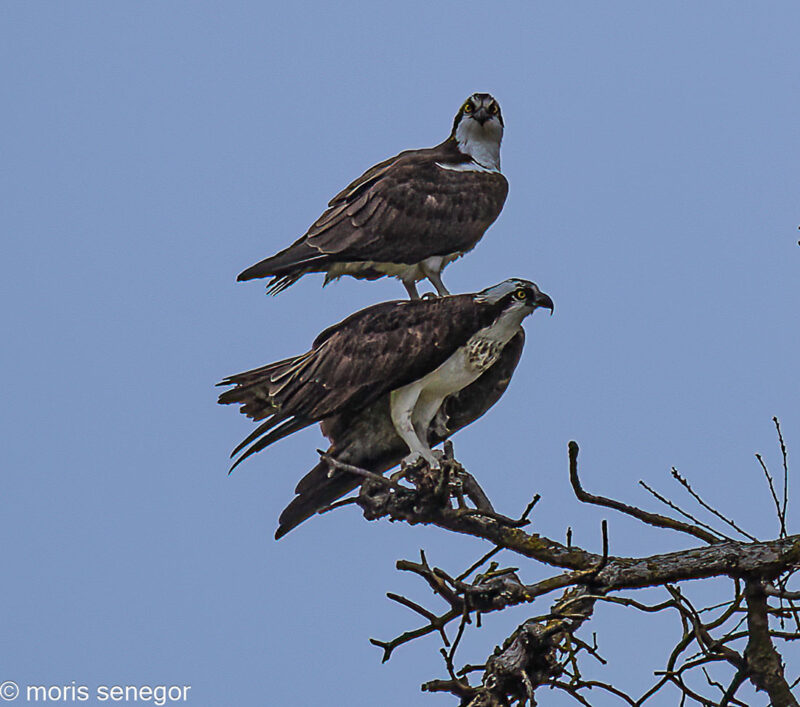
Males are smaller than females. If the pair are together, this can be a distinguishing feature.
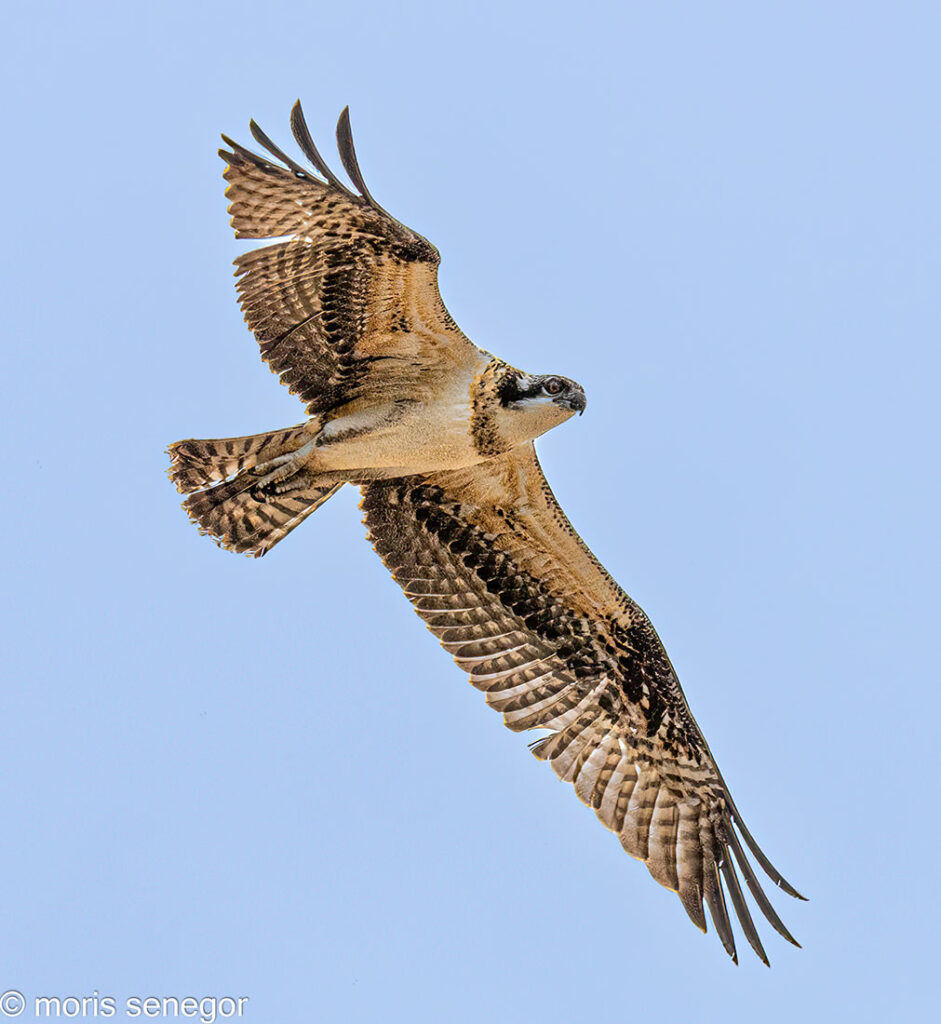
Another way to distinguish is that females have a necklace-like dark band around their necks. Males don’t.

Juveniles can be distinguished not only by their smaller size but their orange eyes as opposed to yellow in adults.
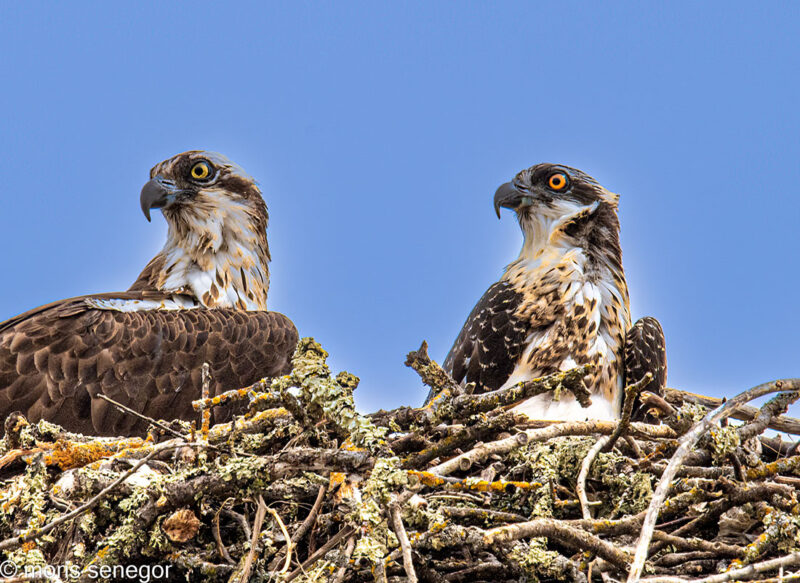

I also learned some of their habits. Like us humans they lived as a male-female pair, one pair for each nest. They mated and raised their young attentively.
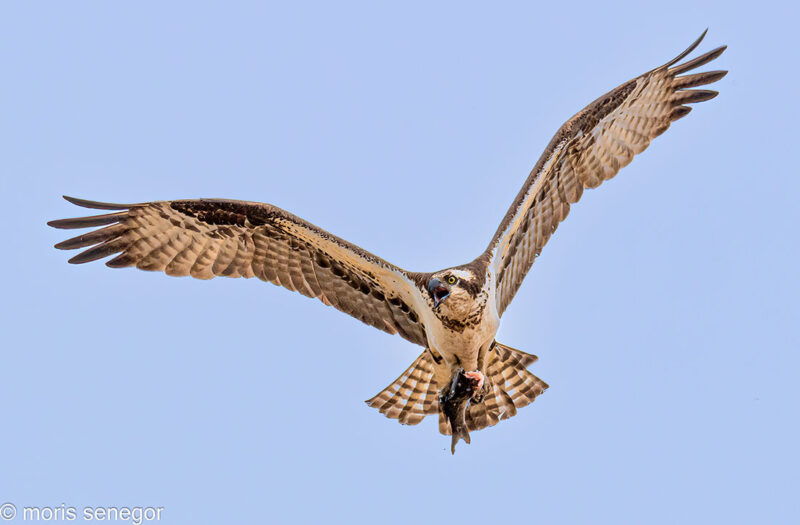
When one captured a fish, it ate part of it, starting with the head. Once sated, it returned the remainder to the nest to share with family.
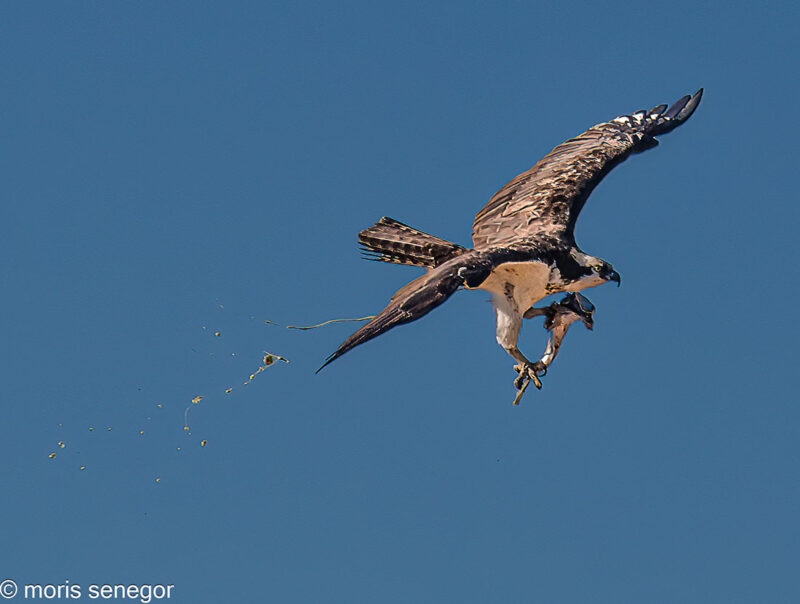
On one occasion I tracked an osprey with partially eaten fish in its talons. When I processed the burst of shots I had taken, I discovered that I had captured it defecating while in flight.
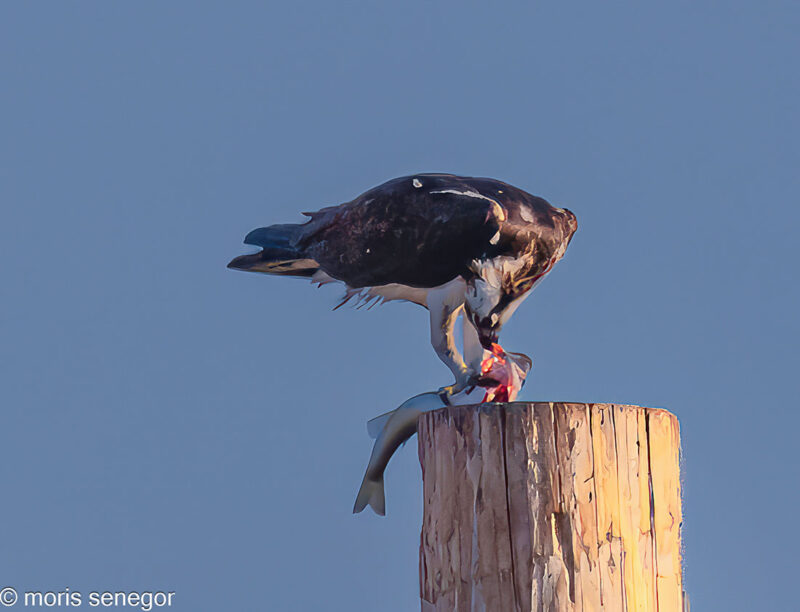
At Pardee there was a specific pole atop which they preferred to eat their prey. It was some distance from the nest.
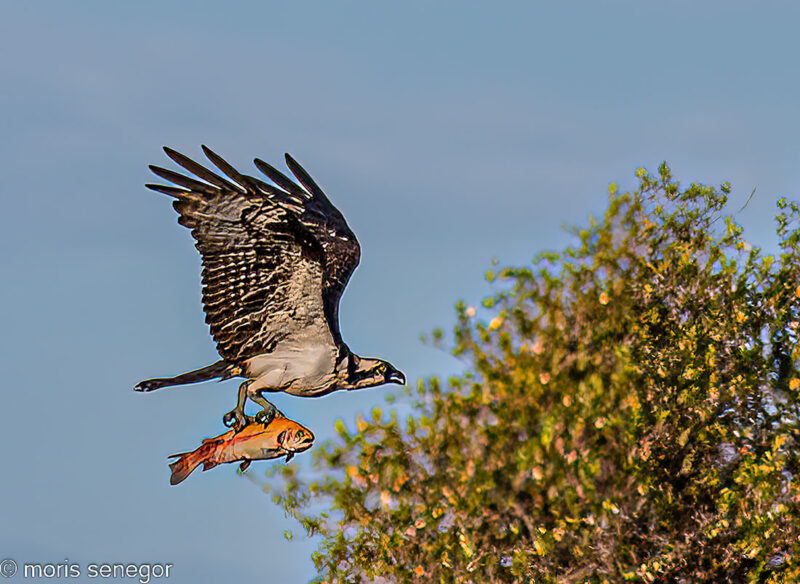
The way ospreys carried their prey in flight was unique, always in a forward facing, aerodynamic position.
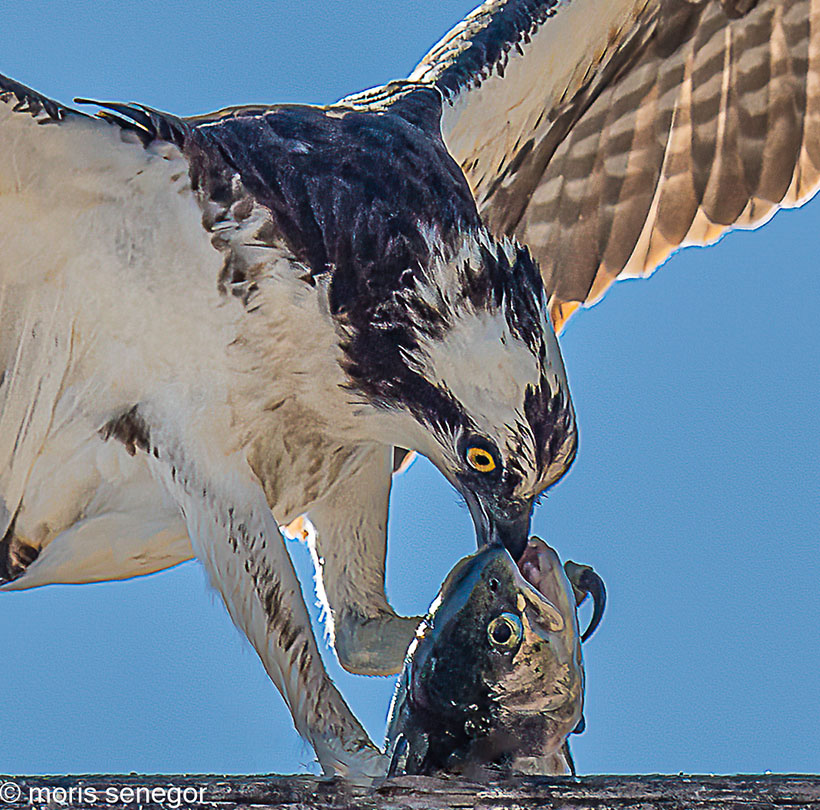
Soon I had captured ospreys in almost every flight position and in various poses with fish in their talons. But I had never witnessed the dive, splash and emergence with the fish. Catching one became an obsession.
Lake Pardee seemed more suitable for this venture, its shores more accessible than Camanche. I began day camping at Pardee from sunrise to afternoon, bringing a folding chair, some food and my camera. I waited and waited.

Pardee is really beautiful, peaceful in the solitary spots I chose. There I found myself communing with nature in a way – the big city kid that I am – I had never done before. I captured great shots of various other birds and, of course, more ospreys. But that dive and splash remained elusive.
The spot where I kept my vigil was in an area reserved for ospreys. Fishing boats were not allowed. I had a notion that this area would be like an airport runway for ospreys to come by and dive.
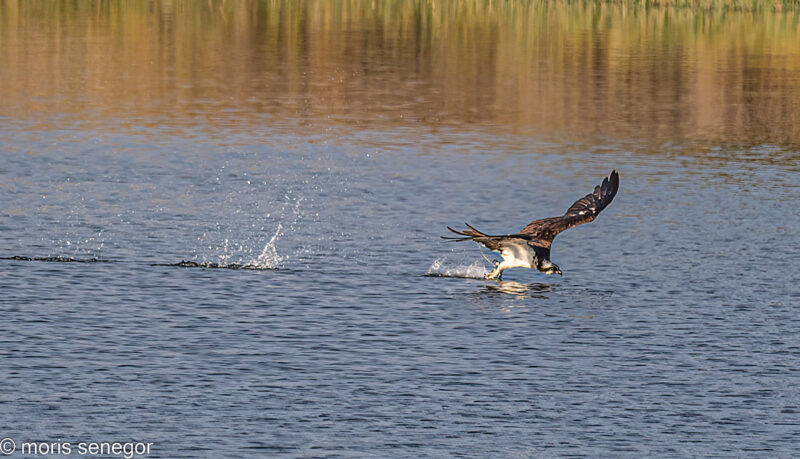
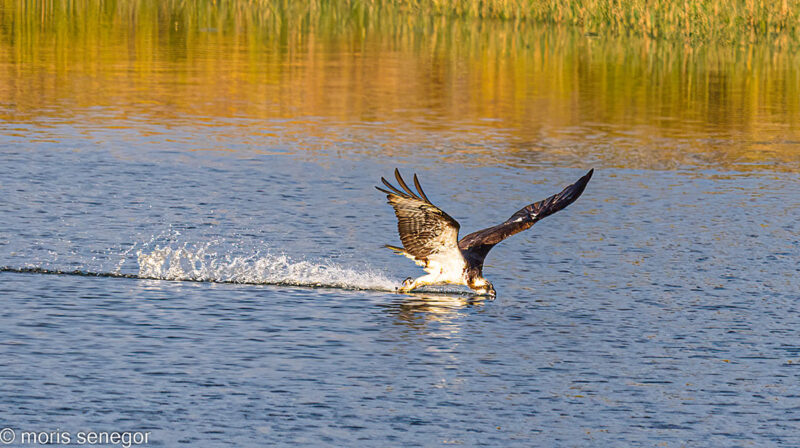
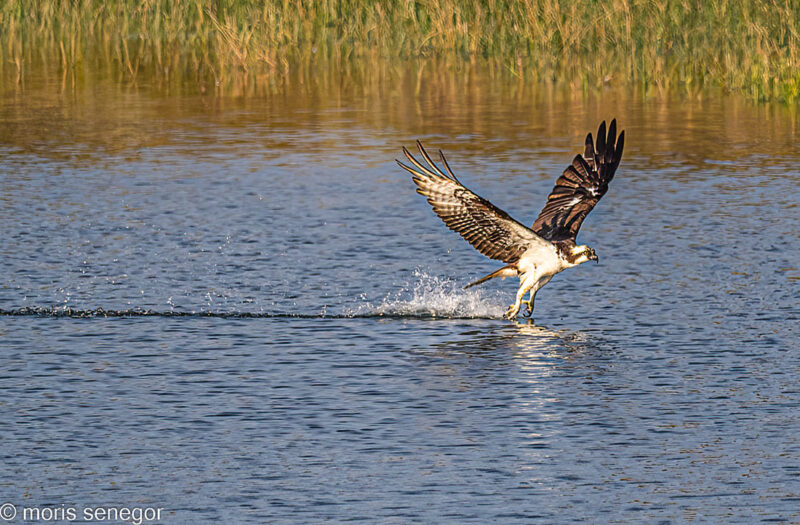
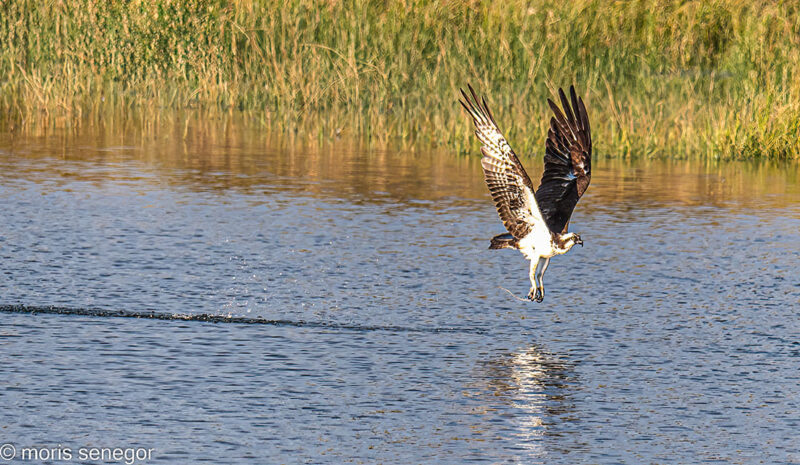
On one occasion an osprey did just that, and I captured the whole sequence. But alas, it emerged with no fish. It was merely washing its talons.


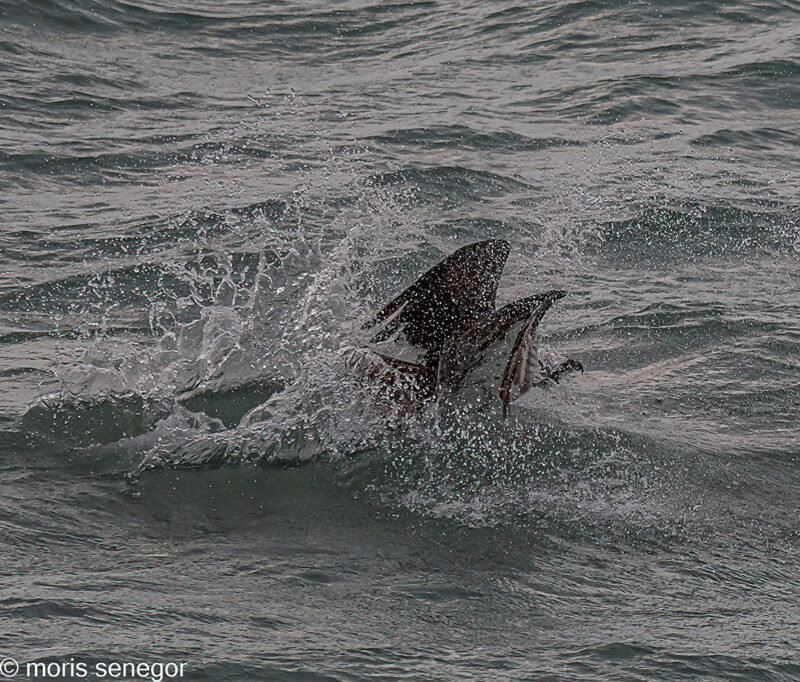
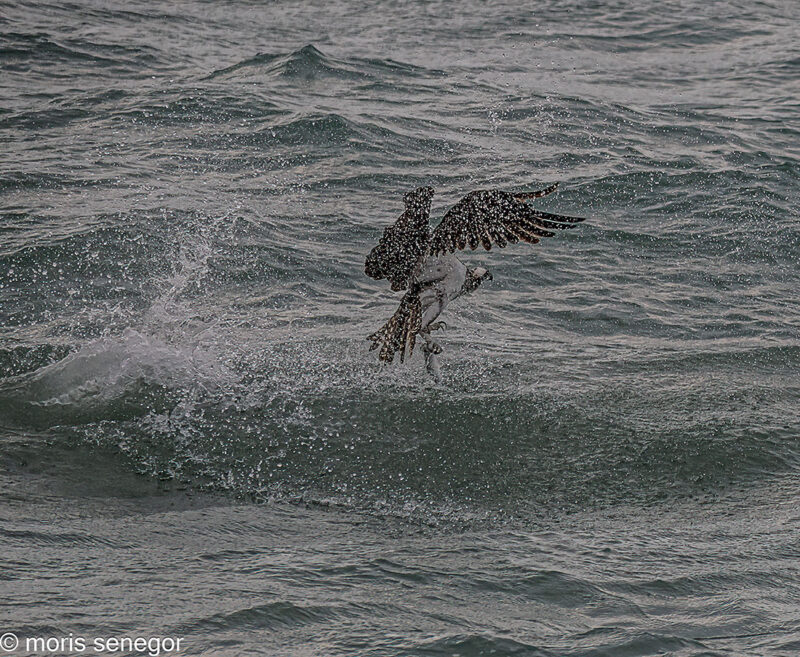
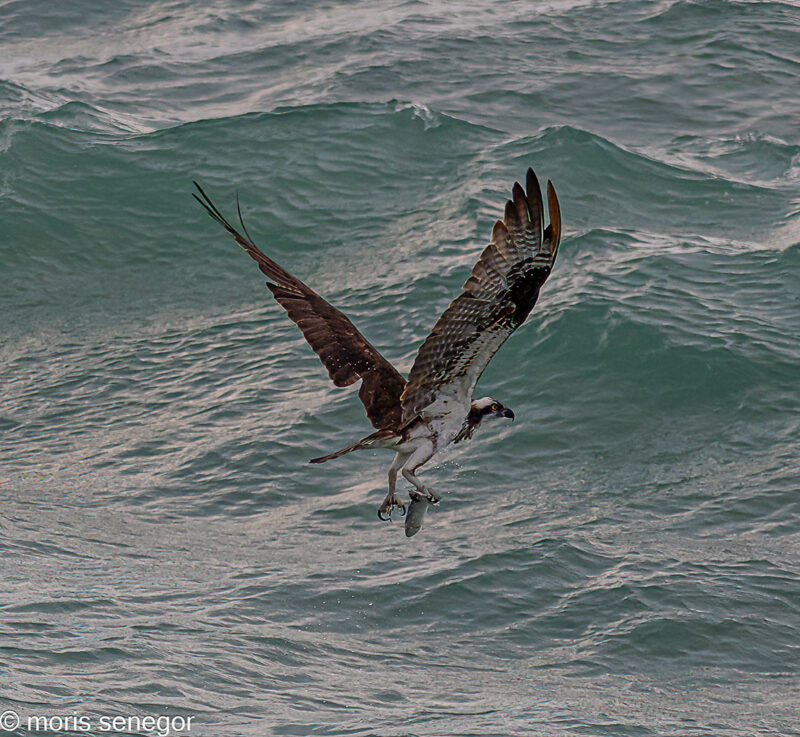
I would eventually have to travel all the way to Florida to capture that coveted dive shot. When I did, I realized how naïve I was with my concept of an airport runway. Ospreys don’t keep to a fixed spot. They dive into wherever the fish are.
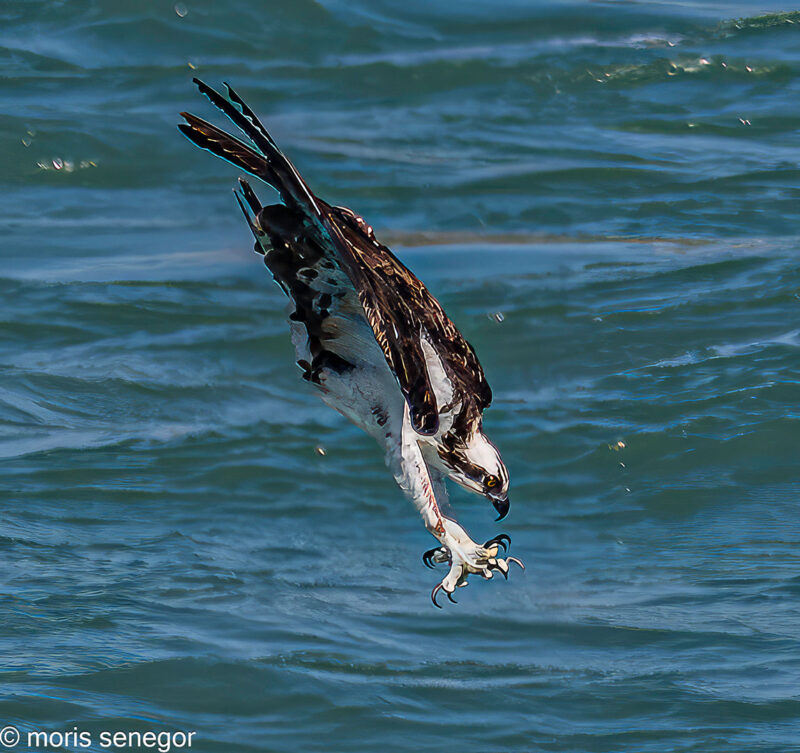
From San Diego to Camanche and Pardee, to Florida, my journey with ospreys has been most fulfilling. I’ve come to recognize them as noble birds, more so than their more celebrated lookalikes, bald eagles. But that would be the subject of another essay.
